Alternative Sources of Winter Forage.
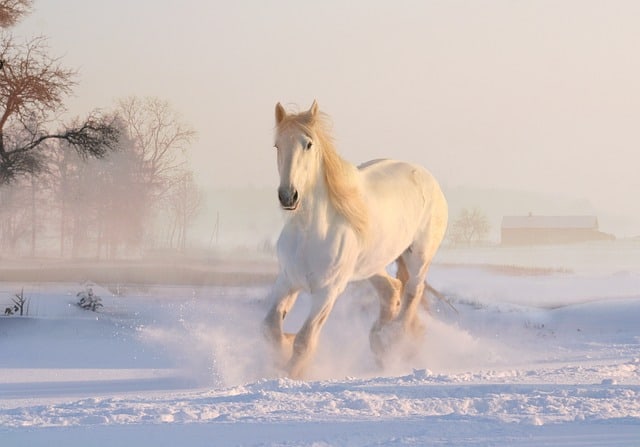
It is widely acknowledged that grass is still the cheapest form of feed for horses, arguably it is also still the best. In the natural environment it suits our equine friends down to the ground, constant chewing and trickle feeding satisfies their needs and eliminates many digestive upsets.
At this time of year the grass starts to slow in its growth pattern considerably and also to lose some of its nutritional value. Most of us will be looking at some kind of extra feeding to maintain body condition.
The growth of grass is all dependent on the correct growing conditions and in recent years there have been some unusual patterns of weather that can lead to problems obtaining winter forage. Long dry summers provide great weather for saving hay, while wet summers, can make it difficult to save good hay and bedding. In 2018 Many farmers had to use early cut silage to feed stock and open up fields that had been saved for hay, for grazing. All of which is not good news for conserving winter forage.
The growth of grass is all dependent on the correct growing conditions and in a year that has seen some unusual patterns of weather are we going to struggle to feed this winter?
In 2017 the winter set in almost at the end of August with a turn in the weather and hit hard again in March 2018 with the arrival of the Beast from the East! All just at a time when, in a good year, the harrows, rollers and fertilizer spreaders would be looking to be pressed into service.
In Autumn 2018 we enjoyed a bit of an Indian summer. Due to fodder shortages everyone prayed for a mild winter, so that the Fodder Reserves would last until Summer 2019. Hay and round bale haylage were at a premium price as was straw, barley had also gone up in price due to a shortage in supply, meaning that other grains were utilized where possible, driving up their demand and price accordingly. This all sounded very gloomy and we decided that we would explore some alternative sources of winter forage for your horse. This will give you some options in case you find yourself unable to acquire sufficient good quality forage.
So what can we look at if we need an alternative filler for our horses? Bearing in mind the basic rules of feeding there are a few alternatives we can consider.
What other sources of roughage can we feed?
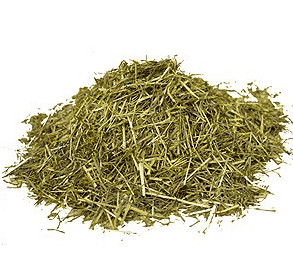
Chaff was traditionally used to slow down a greedy eater, fibre requires a considerable amount more chews to reduce its partial size down to the 2mm a horse requires to digest it. High quality chaff made from chopped hay can provide an alternative source of roughage to long fibre hay. It could be used to replace all the ration. Bear in mind not all chaff is equal some may contain chopped straw, alfalfa or herbs and it often contains molasses to eliminate dust and improve palatability.
Up to 55% of the ration can be fed as sugar beet. Although it won’t replace all your hay it can be used to replace part of the hay ration.
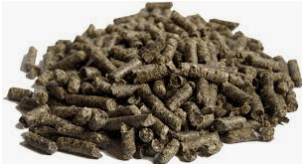
Another alternative is Sugar Beet. Referred to as a super fibre it is slowly digested, high in fibre and, unless you are training high performance horses, can be fed in reasonably large quantities. It has high calcium to phosphorous levels but is low in protein.
Sugar beet has to be soaked before being fed to horses and if its freezing make sure this is done in a place where it won’t freeze and thus not soak properly, you can add a small amount of table salt to prevent this. Although it won’t replace all your hay it can be used to replace part of the hay ration.
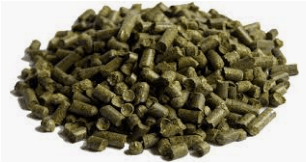
Grass nuts are a good source of roughage, made from dried cubed grass they tend to be higher in protein than most hay and can be used to replace part of the hay ration. Once again they would require soaking prior to feeding.
High fibre nuts these again can replace part of the hay ration and often contain processed alternative sources of roughage such as straw, they tend to be low in essential amino acids and the better ones will have added protein sources. These can be fed dry or soaked.
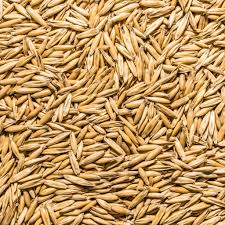
Although Oats have a high fibre content they can have a heating effect on many animals, they are also not a balanced feed. High in starch and low in essential amino acids with an imbalance of calcium and phosphorous, they need a balancer to be fed alongside them. High levels of starch put a strain on the bacteria in the horse’s caecum to safely convert this to a usable form of carbohydrate. Fats and oils are now commonly used to provide energy in pre prepared mixes and cubes because of this.
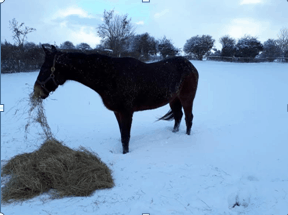
Good quality hay is always going to be the best winter forage for horses however if you are struggling due to a shortage of availability you do have some alternatives. Always feed in accordance with manufacturers recommendations and remember to feed little and often.
Happy feeding.
If you liked this article, remember to check out our Best Horse Rugs for Winter>
This Article was originally published in our first Issue of Irish Sport Horse Magazine November 2018. Written by Jessica Soley BHSI.
